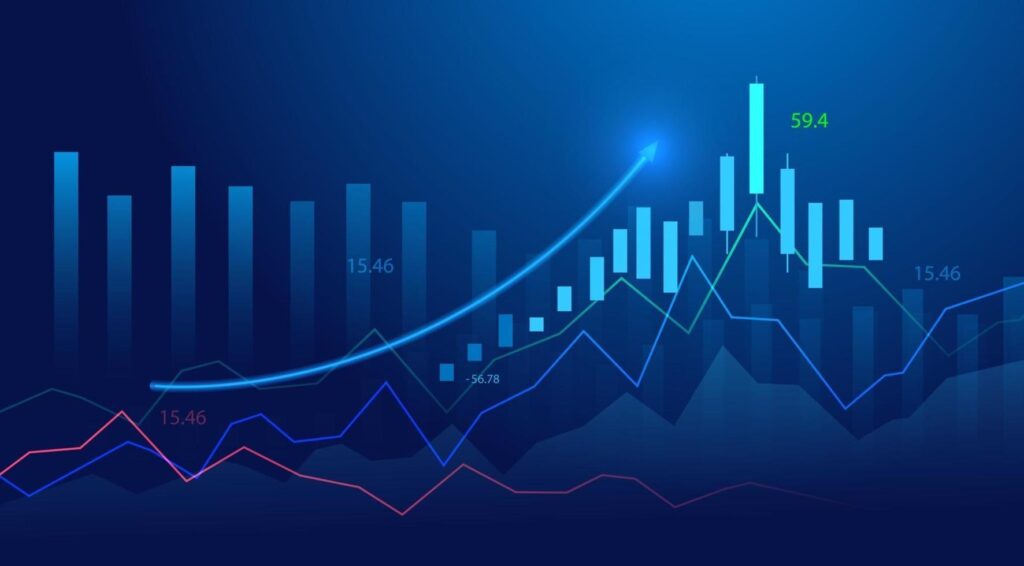6 Steps to Build Wealth Through Smart Trading
Financial freedom is not a mere buzzword, it’s a lifestyle choice. One path to attain this goal is through smart trading. In the sea of investment strategies, trading stands out as a promising vessel, with a little navigation, you could be on your way to building wealth. In fact, I’ve come across a trading system that has impressed me, which I’ll share later. But first, let’s discuss some fundamental steps to help you venture into the world of trading with confidence.

Content
1. Education is Key
Before you set sail, you must equip yourself with knowledge about trading. Start with basics such as understanding what trading is, the different types of trading (day trading, swing trading, position trading, etc.), and the various markets you can trade in (stocks, commodities, currencies, etc.). This will form the foundation of your trading journey.
2. Choose Your Trading Style
Once you understand the basics, the next step is to choose a trading style that suits your personality, lifestyle, and financial goals. For instance, if you can’t handle high-stress situations, day trading might not be for you. Swing trading, on the other hand, might be more your speed, allowing you to hold onto trades for days or weeks.
3. Build a Trading Plan
A trading plan is like a map that guides you through your trading journey. It should include details like your trading goals, risk tolerance, specific trading strategies, and criteria for entering and exiting trades. A well-thought-out trading plan can help keep emotions in check and prevent impulsive decisions.
4. Start with a Demo Account
Just like you wouldn’t get behind the wheel without practicing, you shouldn’t dive into live trading without some hands-on experience. Many online trading platforms offer demo accounts where you can practice your trading strategies with virtual money. This gives you a chance to get a feel for the market without risking real capital.
5. Keep Learning
The financial markets are dynamic, and staying informed is crucial for trading success. Regularly read financial news, follow market trends, and continue to educate yourself about different trading strategies. You can learn a lot from seasoned traders and their experiences. For example, consider checking out this 1000pip climber system review which provides an insightful look at a particular trading system.
6. Use the Right Tools
To navigate the volatile seas of trading, you need the right tools. This includes a reliable trading platform, charting software, and potentially a trading system to guide your decision-making process. Speaking of trading systems, here’s a guide on how to use forex trading to boost your financial freedom that explores the use of systems like the 1000pip Climber Forex System.
Trading isn’t a get-rich-quick scheme; it requires time, effort, and discipline. However, with the right approach and resources, it can be a viable avenue to build wealth. If you’re interested in learning more about smart trading, check out how to use science to improve your financial situation. It provides some enlightening information on how science and trading can go hand in hand.
Beware of Emotional Trading
It’s human nature to be driven by emotions, but in the world of trading, emotions can be detrimental. Fear and greed are the two most common emotions that can impact your trading decisions. Fear can cause you to sell your positions prematurely during a market downturn, whereas greed can compel you to hold onto a position for too long in the hopes of making more profit. It’s essential to be aware of these emotions and ensure that your decisions are based on careful analysis rather than emotional reactions.
Keep an Eye on the Market Trends
Market trends are one of the most influential factors in trading. Upward trends, downward trends, and sideways trends can guide your trading decisions. Following the trend, or trend trading, is a strategy where traders aim to capitalize on upward and downward market trends. Keeping an eye on market trends and understanding how they can impact your trades is a critical part of successful trading.
Balance Risk and Reward
Every trade carries a certain level of risk, but it also carries potential for reward. It’s crucial to balance risk and reward in your trading strategy. One common method to achieve this balance is the use of stop-loss orders, which limit your loss if a trade doesn’t go in your favor. Conversely, take-profit orders allow you to lock in profits when a trade reaches a certain price. By utilizing these tools, you can effectively manage risk while maximizing your potential rewards.

Donna is your friend in the know. Her blog is a treasure trove of insightful tidbits on a wide range of topics. From wellness to technology, she’s your source for staying informed and inspired.










